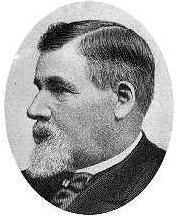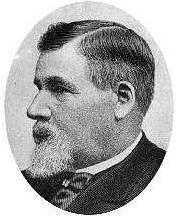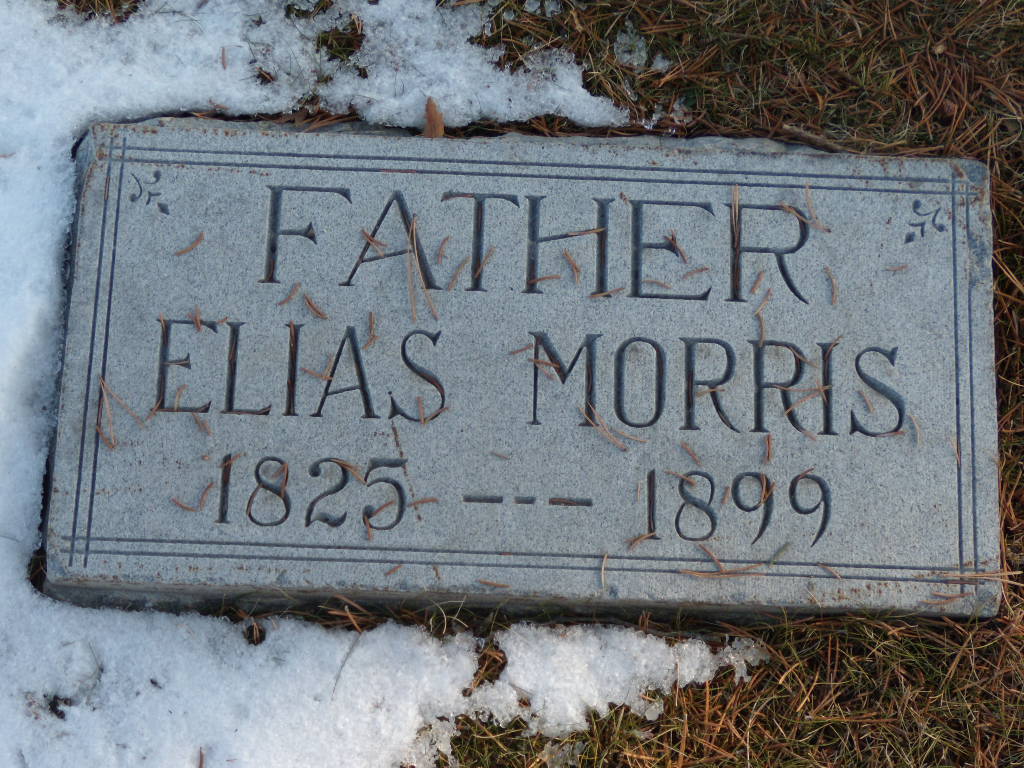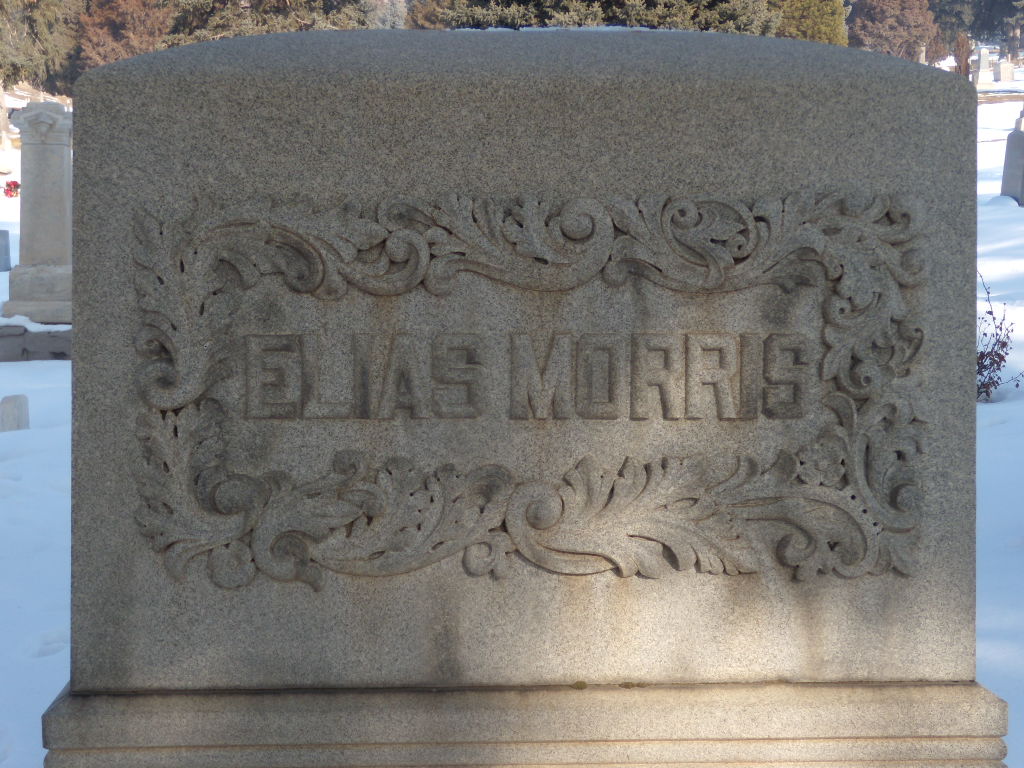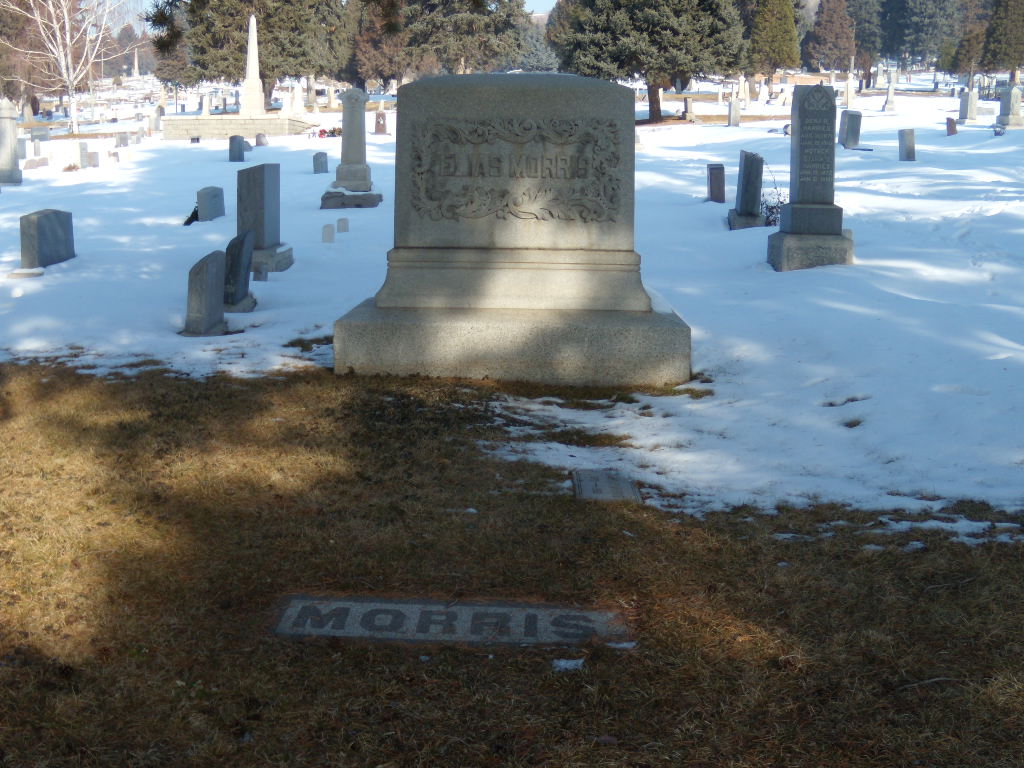Married Mary Parry, 23 May 1852, Council Bluffs, Kanesville, Pottawattamie, Iowa
Children - Josephine Edna Morris, Winifred Jane Morris, Mary Ella Morris, John Parry Morris, Barbara Elizabeth Morris, Albert Conway Morris, Ernest Edwin Morris, Jessie Pearl Morris, Harriet Ann Morris, Edward Parry Morris, Rosa Frances Morris, Elias Perry Morris
Married Mary Lois Walker, May 1856, Salt Lake City, Salt Lake, Utah
Children - Effie Walker Morris, Nephi Lowell Morris, George Quayle Morris, Marian Adelaide Morris, Katherine Vaughn Morris, Ray Goodwin Morris, Richard Vaughn Morris, John Conway Morris
Heart Throbs of the West, Kate B. Carter, Vol. 6, p. 351
Elias Morris was a young stone mason in Wales, after serving his apprenticeship under the guidance of his father, hired himself out to the contractor of the Conway Castle and the Conway Bridge. This work completed, he went to Liverpool to gain a wider experience in his trade. Upon returning to Wales a year or so later to visit his folks, he heard the Gospel of Jesus Christ, was converted, and soon started on the long journey to Zion. Reaching Council Bluffs in May, 1852, he met his betrothed, who had preceded him to this country. They were married and immediately started on their trip across the plains. At Independence Rock, Wyoming, the young stone mason had the first urge to ply his trade. He took his chisel from his bag and carved in everlasting letters: ELIAS MORRIS and his wife, MARY P. MORRIS. Hundreds of names are scratched upon that Register of the Desert—some still legible—but the expert carving of his name earned for him the title "first stone cutter of Utah."
Soon after entering the Valley, the young couple settled in Provo. Upon hearing that plans were being made to lay the cornerstone of the Salt Lake Temple, Elias, with just a crust of bread in his pocket, walked fifty miles to participate in this event. He felt well repaid for this effort when he was given the pleasure and honor of cutting and dressing one of the huge stones of granite and laying it in place. He then moved his family to Salt Lake and worked for years on Temple Square.
Elias Morris was called upon by home builders to give advice and assistance in placing and cutting flag-stones for doorsteps and hearths for open fireplaces, also in building chimneys of adobe or brick for log cabins. He was a man of industry and when he couldn't buy adobe or brick he opened up a brickyard of his own where he made adobe, concrete pipe, concrete forms, and later on, fire brick. To show how jealously he guarded his reputation as a master builder, this story is told: He was contracting for so much work it was hard to get time to complete an unfinished chimney on his own house. An unexpected storm in the middle of the night brought a wind so strong it blew down the partly-built chimney. Elias heard the crash and knew what it was. He turned to his wife and said, "Mary please get up, put on some of my old work clothes, get the lantern and the scrub bucket ... you are about to become a hod-carrier. I can't repair the chimney alone, so you must help me save my reputation." Regardless of wind, rain, or darkness, that chimney was rebuilt before morning.
One big stone job that stands as a monument to Elias Morris is the group of stone structures at Fort Douglas. The stone chapel, the post-office, officers' headquarters, and the large, sturdy homes. They stand today (1944) in perfect condition, have been of service for scores of years and will still be secure and solid for many years to come. As years went by, the stone and building business flourished and Elias Morris branched out in many sidelines—one, the monumental business. His name was and is today connected with one of the leading institutions and dealers in memorial markers of stone. A noted man, upon being asked his opinion of a certain group of people, made this remark: "Show me their cemeteries, then I will be able to pass judgment." — Josephine Morris Goff.
Married Mary Parry, 23 May 1852, Council Bluffs, Kanesville, Pottawattamie, Iowa
Children - Josephine Edna Morris, Winifred Jane Morris, Mary Ella Morris, John Parry Morris, Barbara Elizabeth Morris, Albert Conway Morris, Ernest Edwin Morris, Jessie Pearl Morris, Harriet Ann Morris, Edward Parry Morris, Rosa Frances Morris, Elias Perry Morris
Married Mary Lois Walker, May 1856, Salt Lake City, Salt Lake, Utah
Children - Effie Walker Morris, Nephi Lowell Morris, George Quayle Morris, Marian Adelaide Morris, Katherine Vaughn Morris, Ray Goodwin Morris, Richard Vaughn Morris, John Conway Morris
Heart Throbs of the West, Kate B. Carter, Vol. 6, p. 351
Elias Morris was a young stone mason in Wales, after serving his apprenticeship under the guidance of his father, hired himself out to the contractor of the Conway Castle and the Conway Bridge. This work completed, he went to Liverpool to gain a wider experience in his trade. Upon returning to Wales a year or so later to visit his folks, he heard the Gospel of Jesus Christ, was converted, and soon started on the long journey to Zion. Reaching Council Bluffs in May, 1852, he met his betrothed, who had preceded him to this country. They were married and immediately started on their trip across the plains. At Independence Rock, Wyoming, the young stone mason had the first urge to ply his trade. He took his chisel from his bag and carved in everlasting letters: ELIAS MORRIS and his wife, MARY P. MORRIS. Hundreds of names are scratched upon that Register of the Desert—some still legible—but the expert carving of his name earned for him the title "first stone cutter of Utah."
Soon after entering the Valley, the young couple settled in Provo. Upon hearing that plans were being made to lay the cornerstone of the Salt Lake Temple, Elias, with just a crust of bread in his pocket, walked fifty miles to participate in this event. He felt well repaid for this effort when he was given the pleasure and honor of cutting and dressing one of the huge stones of granite and laying it in place. He then moved his family to Salt Lake and worked for years on Temple Square.
Elias Morris was called upon by home builders to give advice and assistance in placing and cutting flag-stones for doorsteps and hearths for open fireplaces, also in building chimneys of adobe or brick for log cabins. He was a man of industry and when he couldn't buy adobe or brick he opened up a brickyard of his own where he made adobe, concrete pipe, concrete forms, and later on, fire brick. To show how jealously he guarded his reputation as a master builder, this story is told: He was contracting for so much work it was hard to get time to complete an unfinished chimney on his own house. An unexpected storm in the middle of the night brought a wind so strong it blew down the partly-built chimney. Elias heard the crash and knew what it was. He turned to his wife and said, "Mary please get up, put on some of my old work clothes, get the lantern and the scrub bucket ... you are about to become a hod-carrier. I can't repair the chimney alone, so you must help me save my reputation." Regardless of wind, rain, or darkness, that chimney was rebuilt before morning.
One big stone job that stands as a monument to Elias Morris is the group of stone structures at Fort Douglas. The stone chapel, the post-office, officers' headquarters, and the large, sturdy homes. They stand today (1944) in perfect condition, have been of service for scores of years and will still be secure and solid for many years to come. As years went by, the stone and building business flourished and Elias Morris branched out in many sidelines—one, the monumental business. His name was and is today connected with one of the leading institutions and dealers in memorial markers of stone. A noted man, upon being asked his opinion of a certain group of people, made this remark: "Show me their cemeteries, then I will be able to pass judgment." — Josephine Morris Goff.
Family Members
-
![]()
Barbara Elizabeth Morris Jones
1853–1937
-
![]()
Winifred Jane Morris Tibbs
1855–1947
-
![]()
Harriet Ann Morris
1857–1865
-
![]()
Elias Parry Morris
1859–1916
-
![]()
Effie Walker Morris Ashton
1859–1929
-
![]()
Marian Adelaide Morris Cannon
1861–1933
-
![]()
Mary Ella Morris
1862–1954
-
![]()
John Conway Morris
1863–1867
-
![]()
Edward Parry Morris
1864–1865
-
![]()
Rose Frances Morris Brown
1864–1946
-
![]()
John Parry Morris
1870–1922
-
![]()
Nephi Lowell Morris
1870–1943
-
![]()
Ray Goodwin Morris
1872–1873
-
![]()
Ernest Edwin Morris
1872–1949
-
![]()
Albert Conway Morris
1874–1904
-
![]()
George Quayle Morris
1874–1962
-
![]()
Jesse Pearl Morris
1876–1878
-
![]()
Katharine Vaughan Morris Cannon
1876–1930
-
![]()
Josephine Edna Morris Goff
1879–1952
Advertisement
Records on Ancestry
Advertisement
